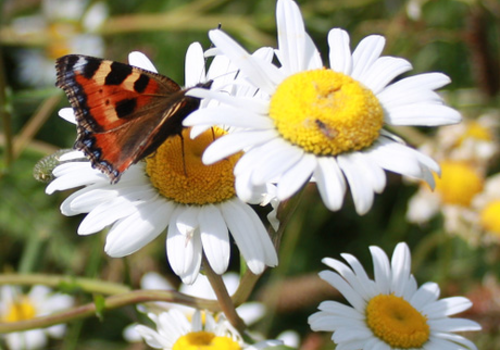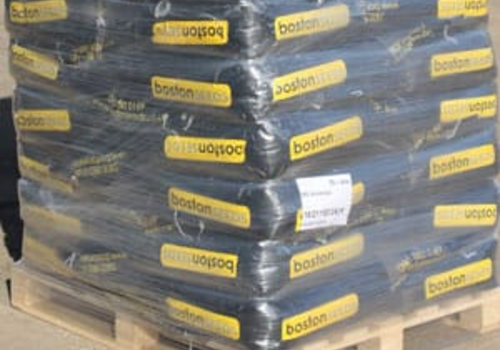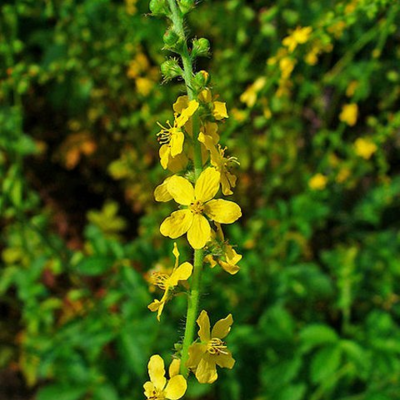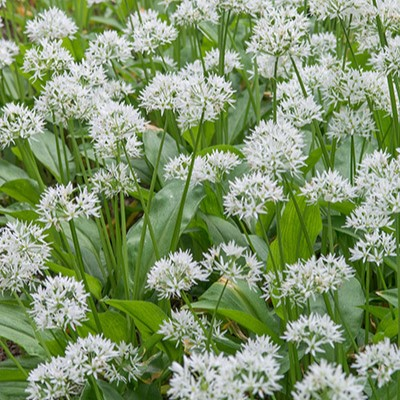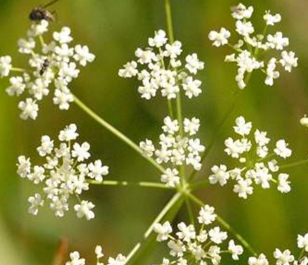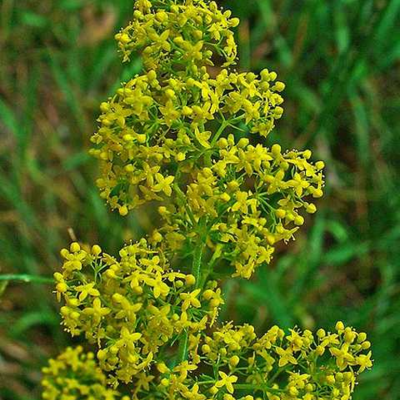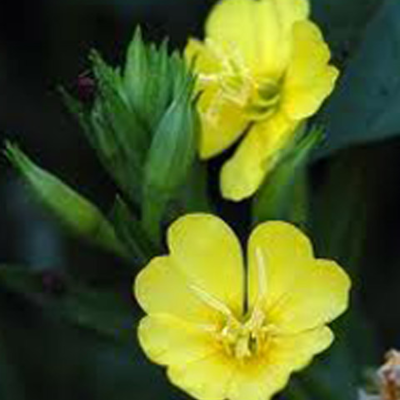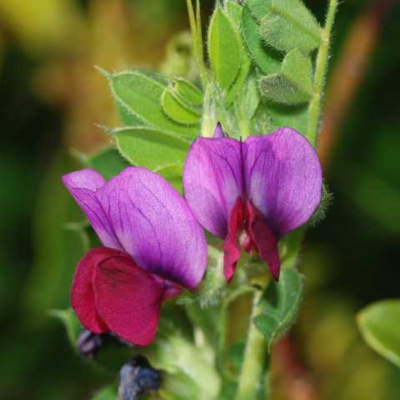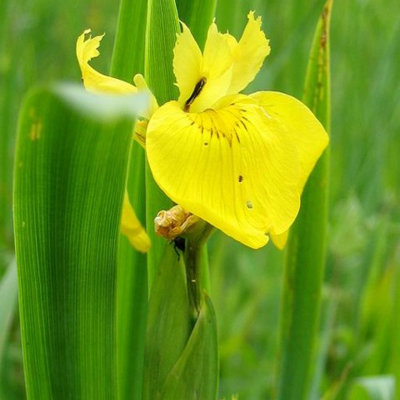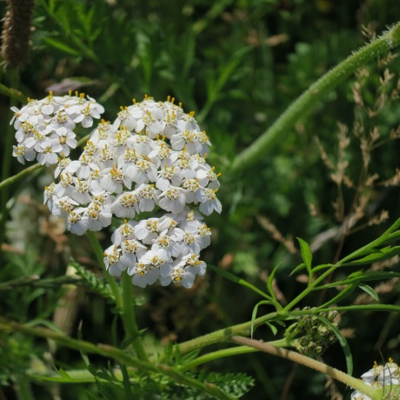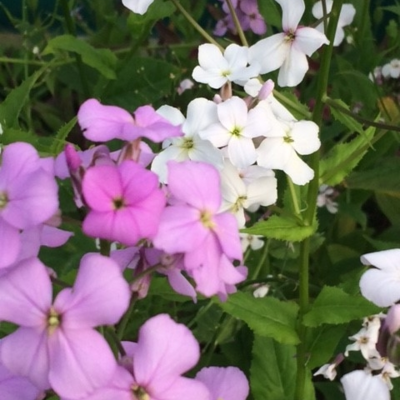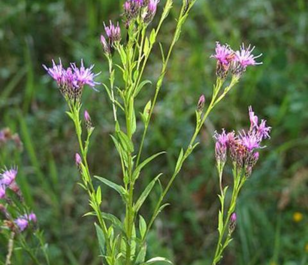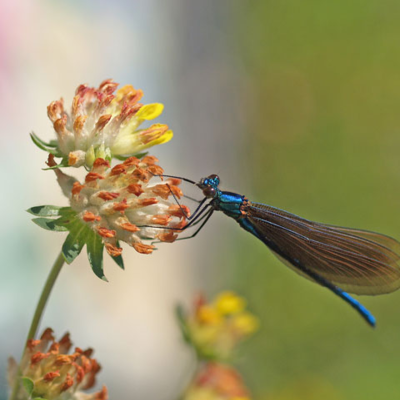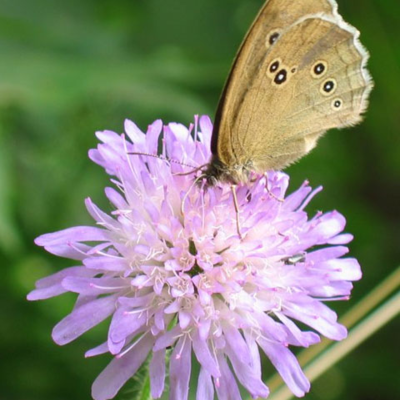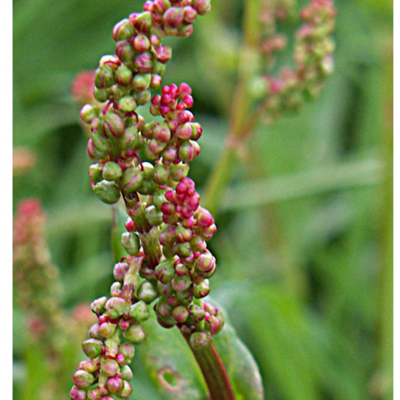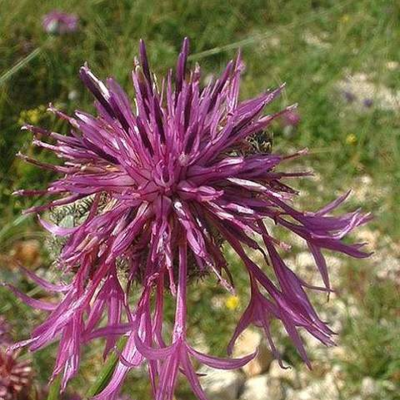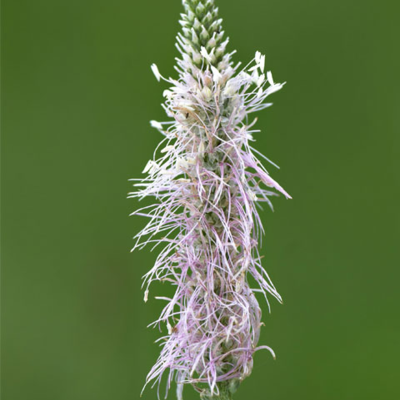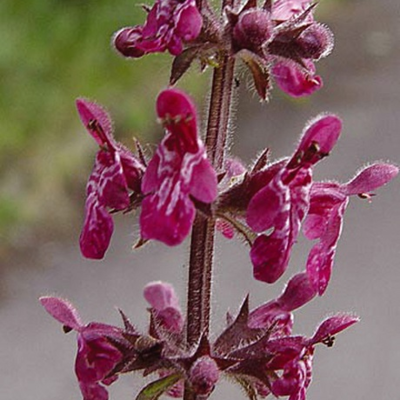Wildflower Seeds A to Z
From Agrimony right the way though to Yellow-rattle, there's a whole host of wildflower seeds you can choose from if a particular look is what you're going for. Each type of wildflower has its own unique set of qualities. Whether you're keen to create a meadow full of sunkissed golden wildflowers with healing properties like that of St John's-wort or you want a wildflower garden that looks pretty in pink when dressed in Greater Knapweed or Purple Loosestrife - we've got you covered.
Don't hesitate to get in touch to speak to one of our experts or request a catalogue to view our full range. Ordering regularly or looking for large volumes? Click here to apply for a trade account today - we review all applications within one working day.

Plants for Pollinators highlights plants selected by the RHS as scientifically proven to tackle the declines in bees, butterflies and other pollinators.
Common Agrimony is an attractive, medium-height meadow plant. Its yellow flowers on tall spires are ideally placed for bees and a number of species of wild birds. Steeped in British folklore, legend has it that placing a common agrimony flower under one's head will cause them to sleep until it is taken away.
- Type: Perennial
- Height: 40-80cm
- Flowers: June-September
- Best Sown: Autumn
- Soil Requirement: Well-drained, neutral
- Light Requirement: Full sun or partial shade
- Natural Habitat: Southern UK, grassland, meadows, roadsides
- Also known as: Church Steeples, Sticklewort, Aaron's Rod, Clot-Bur, Fairy's Wand, Money-In-Both-Pockets, Salt-And-Pepper, Sweethearts
- Seeds per gram: 60

Plants for Pollinators highlights plants selected by the RHS as scientifically proven to tackle the declines in bees, butterflies and other pollinators.
A wild perennial herb relative of chives, Wild Garlic (or Ramsons) grow in damp woods, hedges and on shady banks, where its garlicky aroma fills the air. The leaves of this herb are in fact very commonly found in salads or used to flavour meat dishes and sauces. Excellent plant for ground cover in a wet corner of the garden.
- Type: Perennial
- Height: 30-80cm
- Flowers: April-June
- Best Sown: Autumn or Spring
- Soil Requirement: Well-drained
- Light Requirement: Full and partial shade
- Natural Habitat: Woodland, hedgerows
- Also known as: Ramson, Broad-leaved Garlic, Bear's Garlic
- Seeds per gram: 180
A Perennial Plant that has a yellow, glossy flower that is around 2cm in diameter. The foliage belonging to this plant is much coarser than Meadow Buttercup along with being lower-lying to the ground. The leaves are divided into 3 lobes with fraying edges and a hairy appearance. This plant has long, rooting runners which aid in the spread across an area.
- Type: Perennial
- Height: 30-60cm
- Flowers: May-August
- Best Sown: Autumn or Spring
- Soil Requirement: Damp
- Light Requirement: Full sun and partial shade
- Natural Habitat: Woods, wet-moist meadows, farmland, footpaths, wasteland
- Also known as: Little Frog
- Seeds per gram: 500
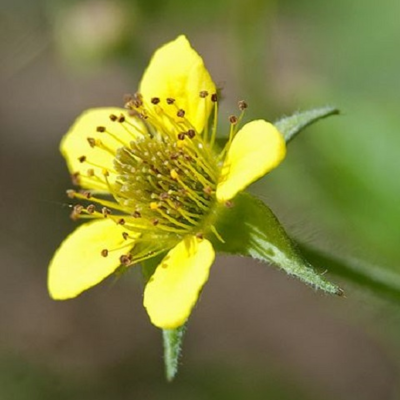

Plants for Pollinators highlights plants selected by the RHS as scientifically proven to tackle the declines in bees, butterflies and other pollinators.
The Wood Avens bears small, nectar-rich yellow flower heads, followed by burr-like seed heads. Once prized for medicinal use by herbalists and named a 'blessed herb', this hardy, leafy plant can still bless your garden with a little sweetness and sunshine in a shady spot.
- Type: Perennial
- Height: 30-60cm
- Flowers: May-August
- Best Sown: Autumn
- Soil Requirement: Well-drained
- Light Requirement: Partial shade
- Natural Habitat: Woods, hedgerows, roadsides
- Also known as: Herb Bennett, Colewort, St. Benedict's Herb, Blessed Herb
- Seeds per gram: 1400
A taller-growing, thin-branched plant which produces umbrellas of tiny white flowers. It also has pleasing, varied foliage and eventually bears attractive pink fruit. Hardy, easy to naturalise and is good for attracting pollinators.
- Type: Perennial
- Height: 50-100cm
- Flowers: May-September
- Best Sown: Autumn or Spring
- Soil Requirement: Well-drained, moist
- Light Requirement: Sun and partial shade
- Natural Habitat: Grassland, heathland
- Also known as: Lesser Burnet
- Seeds per gram: 750

Plants for Pollinators highlights plants selected by the RHS as scientifically proven to tackle the declines in bees, butterflies and other pollinators.
Much like its odd title, the ‘Lady’s Bedstraw’ carries riches in a rough-and-tumble manner, bearing vast whorls and clusters of tiny golden flowers. It also boasts a distinct and sweet scent, even when dried. A hardy, sprawling plant that’s sure to make a fine bed for a wild garden.
- Type: Perennial
- Height: 15-30cm
- Flowers: June-September
- Best Sown: Autumn
- Soil Requirement: Well-drained
- Light Requirement: Full sun or partial shade
- Natural Habitat: Grassy meadows, road verges, clifftops and hills
- Also known as: Maiden’s Hair, Fenwort, Cheese Rennet
- Seeds per gram: 1600
The Evening Primrose’s fragrant bell-shaped flowers are welcome in any garden, and grow in shades of yellow, pink and white on tall stems. They’re easy to grow in any soil for those who want a beautiful bloom to light up the summer evenings.
- Type: Biennial
- Height: 100-150cm
- Flowers: June-October
- Best Sown: Spring
- Soil Requirement: Well-drained, sandy
- Light Requirement: Full sun and partial shade
- Natural Habitat: Roadside verges, meadows
- Also known as: Cure-All, Four O’Clock, German Rambion
- Seeds per gram: 2250

Plants for Pollinators highlights plants selected by the RHS as scientifically proven to tackle the declines in bees, butterflies and other pollinators.
There’s a lot to find fetching about the Vetch: its climbing tendrils of foliage carry an earnest and delicate charm, and its two-petalled, pea-like magenta flowers look a little like butterflies! A lovely legume that’s attractive to pollinators, among other animals- it’s commonly used as a plant for livestock.
- Type: Annual
- Height: 45-75cm
- Flowers: June-September
- Best Sown: Autumn
- Soil Requirement: Well-drained
- Light Requirement: Full sun
- Natural Habitat: Grasslands, verges, coastal areas
- Also known as: Fetch, Lintels
- Seeds per gram: 75
This tall-growing iris really does show its beauty off like a flag in the wind! Thin, branching stems make way for buttery yellow, three-petalled flowers and blade-like leaves. A perfect pond-side plant that’s quite water-tolerant, thought by some to be the original fleur-de-lis, a symbol of heraldry and royalty.
- Type: Perennial
- Height: 100-150cm
- Flowers: May-August
- Best Sown: Autumn or Spring
- Soil Requirement: Moist
- Light Requirement: Full sun and partial shade
- Natural Habitat: Marsh, flood planes, ditches
- Also known as: Flagon, Water Flag, Yellow Fleur-De-Lis
- Seeds per gram: 20

Plants for Pollinators highlights plants selected by the RHS as scientifically proven to tackle the declines in bees, butterflies and other pollinators.
This perennial plant has flat heads consisting of White flowers, the leaves are evenly distributed on the plant and have a feather-like appearance. This perennial flower has a strong aromatic presence in meadows and pastures and is loved by bees and pollinators.
- Type: Perennial
- Height: 30-45cm
- Flowers: June-October
- Best Sown: Autumn or Spring
- Soil Requirement: Well-drained
- Light Requirement: Full sun
- Natural Habitat: Grasslands, hedgerows, road verges
- Also known as: Woundwort, Soldier's Woundwort, Devil's Nettle
- Seeds per gram: 6000
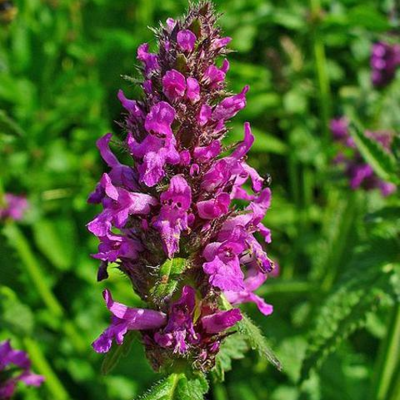

Plants for Pollinators highlights plants selected by the RHS as scientifically proven to tackle the declines in bees, butterflies and other pollinators.
A gorgeous addition to a wildflower garden, bearing spikes of rich purple and red petals, alongside distinct and attractive foliage. Its flowers are also known to attract bees and butterflies and they used to be planted in churchyards for spiritual protection. They grow well in any light, with an affinity for damp soil.
- Type: Perennial
- Height: 30-60cm.
- Flowers: June-August
- Best Sown: Autumn
- Soil Requirement: Moist but well-drained
- Light Requirement: Full sun or partial shade
- Natural Habitat: Grassy meadows, river banks
- Also known as: Bishops’s Wort, Wood Betony, Common Hedgenettle
- Seeds per gram: 600
Light up woodland edges with Dames Violet, creating a smooth lilac, delicate flower. Excellent for naturalising, they can be found in woodland areas and borders to attract bees, butterflies and other pollinators with it's sweet scent.
- Type: Perennial
- Height: 60-90cm
- Flowers: May-August
- Best Sown: Autumn
- Soil requirement: Well-drained, moist
- Light requirement: Full sun and partial shade
- Natural habitat: Hedgerows, wood edges, wasteground
- Also known as: Damask, Queen's Gilliflower, Sweet Rocket
- Seeds per gram: 1,250
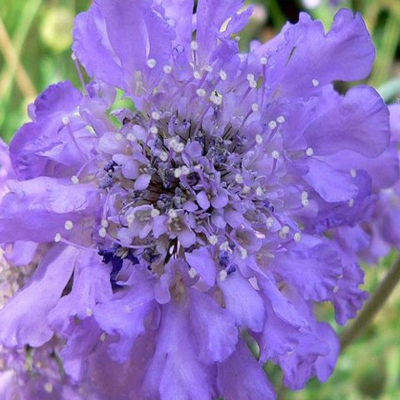

Plants for Pollinators highlights plants selected by the RHS as scientifically proven to tackle the declines in bees, butterflies and other pollinators.
As its name suggests, this smaller scabious specimen still produces the same lovely, lilac petals as the rest of its family, but with five-petalled florets rather than four, a shorter, slender stem and finer foliage. A wonderful wildflower to grow in chalky soil for those who’d prefer the delicate, soft beauty of the scabious in a more controlled garden.
- Type: Perennial
- Height: 60-70cm
- Flowers: July-August
- Best Sown: Autumn or Spring
- Soil Requirement: Well-drained, chalky
- Light Requirement: Full sun
- Natural Habitat: Grasslands, verges
- Also known as: Curl-Doddy, Lilac-Flowered Scabious
- Seeds per gram: 700
A perennial plant that is a relation of the Daisy. This plant has the appearance of a thistle, but without the spines. The name Saw-Wort comes from the serrated edge of the leaves thus having a Saw-like appearance. The Saw-wort has purple flower heads and sit in branched clusters.
- Type: Perennial
- Height: 70-120cm
- Flowers: July-September
- Best Sown: Autumn or Spring
- Soil Requirement: Well-drained, chalky
- Light Requirement: Full sun and partial shade
- Natural Habitat: Grasslands, open woods
- Also known as: Dyer's plumeless saw-wort
- Seeds per gram: 400
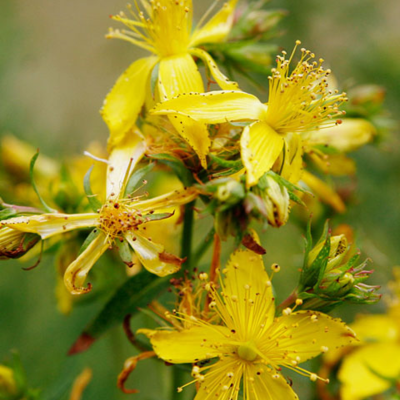

Plants for Pollinators highlights plants selected by the RHS as scientifically proven to tackle the declines in bees, butterflies and other pollinators.
Produces clumps of buttery yellow, star-shaped flowers with long, showy stamens that are good for attracting bees, butterflies and other pollinators. A flower of great religious importance and widely known for medicinal uses.
- Type: Perennial
- Height: 30-60cm
- Flowers: June-September
- Best Sown: Spring
- Soil Requirement: Well-drained, moist
- Light Requirement: Full sun and partial shade
- Natural Habitat: River banks, meadows, hedgerows
- Also known as: Cammock, Devil’s Scourge, Rosin Rose
- Seeds per gram: 9000

Plants for Pollinators highlights plants selected by the RHS as scientifically proven to tackle the declines in bees, butterflies and other pollinators.
Produces fiery, technicolour pom-poms in an array of colours from buttery yellow to rich red, tinting clover-like, wooly white calyces. It has a long flowering period, making it a brilliant bloom to brighten beds all summer long.
- Type: Perennial
- Height: 7-15cm
- Flowers: May-October
- Best Sown: Autumn
- Soil Requirement: Well-drained, chalky
- Light Requirement: Full sun
- Natural Habitat: Grasslands, verges, coastal areas
- Also known as: Devil’s Claws, Mary’s Fingers, Woundwort
- Seeds per gram: 350

Plants for Pollinators highlights plants selected by the RHS as scientifically proven to tackle the declines in bees, butterflies and other pollinators.
Produces soft clusters of bluish-lilac florets, with shapely, longer outer florets. Though it appears dainty and delicate, it’s a tall-growing, hardy perennial that makes for an excellent meadow flower, especially when paired with other pastel-petalled wildflowers!
- Type: Perennial
- Height: 30-90cm
- Flowers: July-September
- Best Sown: Autumn or Spring
- Soil Requirement: Well-drained
- Light Requirement: Full sun
- Natural Habitat: Grasslands, verges
- Also known as: Black Soap, Egyptian Rose, Lady’s Cushion
- Seeds per gram: 130
A wildflower with a lot of flavour! Spice up the garden with slender spires of small, scarlet blooms, which sometimes grow in a sweeter pink colour. It also bears attractive, oval leaves that taste tart when eaten. Self-seeds freely, so take care while you pepper them around.
- Type: Perennial
- Height: 15-60cm
- Flowers: May-August
- Best Sown: Spring
- Soil Requirement: Well-drained
- Light Requirement: Full sun
- Natural Habitat: Grasslands, woodlands, verges
- Also known as: Sour Ducks, Vinegar Plant
- Seeds per gram: 2000
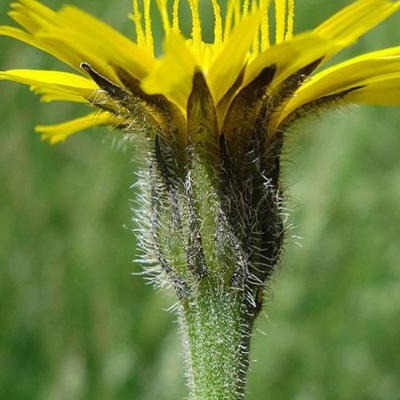

Plants for Pollinators highlights plants selected by the RHS as scientifically proven to tackle the declines in bees, butterflies and other pollinators.
The Rough Hawkbit’s sunburst-styled yellow florets are similar to that of the dandelion, but are distinguished by their larger heads with shades of red and orange on the outer florets, as well as coarse hair on the stem and leaves. A wildflower with a lot of warmth, and a lot of fragrance which helps to attract pollinators!
- Type: Perennial
- Height: 15-50cm
- Flowers: June-October
- Best Sown: Autumn
- Soil Requirement: Well-drained, sandy
- Light Requirement: Full sun
- Natural Habitat: Grasslands, rocky ridges, pathways.
- Also known as: Greater Hawkbit
- Seeds per gram: 900
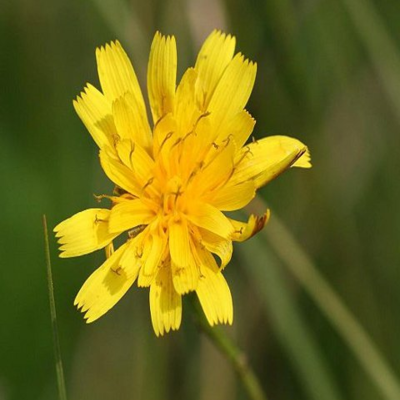

Plants for Pollinators highlights plants selected by the RHS as scientifically proven to tackle the declines in bees, butterflies and other pollinators.
For those with wildflower gardens, the dandelion-like, bright bursting yellow rosettes of the Autumn Hawkbit are a good way to bring in some extra sunshine. A long-lived and hardy wetland plant beloved by bees, and its seeds are also attractive to finches!
- Type: Perennial
- Height: 15-50cm
- Flowers: July-September
- Best Sown: Autumn or Spring
- Soil Requirement: Moist
- Light Requirement: Full sun and partial shade
- Natural Habitat: Grasslands, rocky ridges, pathways.
- Also known as: Fall Dandelion
- Seeds per gram: 1000

Plants for Pollinators highlights plants selected by the RHS as scientifically proven to tackle the declines in bees, butterflies and other pollinators.
A sharp and showy-looking flower, blooming into starburst-shaped, thistle-like magenta florets. The Greater Knapweed is hardy and tall-growing- grow it alone to let its brambly beauty shine forth and attract plenty of butterflies, or contrast it with softer-shaped wildflowers, like the ox-eye daisy.
- Type: Perennial
- Height: 40-90cm
- Flowers: June-September
- Best Sown: Autumn or Spring
- Soil Requirement: Well-drained
- Light Requirement: Full sun and partial shade
- Natural Habitat: Grasslands, cliff-sides
- Also known as: Black Top
- Seeds per gram: 130
A grass-like perennial Wildflower with a 5cm spike of small vanilla scented pale pinkish-purple flowers. The stem of this wildflower is hairy towards the base. The leaf surface is hairy, although more so on the underside. Good reliable meadow subject.
- Type: Perennial
- Height: 20-30cm
- Flowers: June-August
- Best Sown: Autumn or Spring
- Soil Requirement: Well-drained
- Light Requirement: Full sun
- Natural Habitat: Natural grassland, pasture, hay meadows
- Also known as: Narrowleaf Plantain
- Seeds per gram: 2000

Plants for Pollinators highlights plants selected by the RHS as scientifically proven to tackle the declines in bees, butterflies and other pollinators.
A perennial plant that much prefers growing in woodlands, hedgerows and along roadside verges. The flowers are a deep beetroot purple with white blotchy detailing on the petals. This plant has a hairy, crimson-tinted stem, it is also loved by pollinating species due to it aromatic presence.
- Type: Perennial
- Height: 30-90cm
- Flowers: June-September
- Best Sown: Autumn or Spring
- Soil Requirement: Well-drained
- Light Requirement: Partial and full shade
- Natural Habitat: Woodland, hedgerows, roadside verges
- Also known as: Wood Woundwort, Hedge Nettle, Red Archangel, Whitespot
- Seeds per gram: 1000
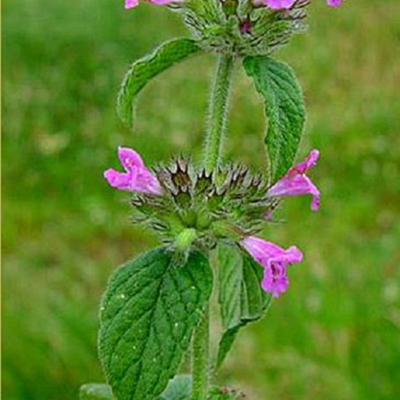

Plants for Pollinators highlights plants selected by the RHS as scientifically proven to tackle the declines in bees, butterflies and other pollinators.
The distinctly-shaped and aromatic leaves of the basil plant surely need no introduction, but gardeners may be pleasantly surprised at their flowers, which bloom in whorls of royal purple and pink. As a plant beloved by pollinators and with plenty of uses outside of the garden, this wildflower has something to offer for just about anyone!
- Type: Perennial
- Height: 30-60cm
- Flowers: July-September
- Best Sown: Autumn
- Soil Requirement: Well-drained, calcareous
- Light Requirement: Full sun
- Natural Habitat: Dry meadows, forests, hedgerows
- Also known as: Cushion Calamint
- Seeds per gram: 2500
Maybe you're looking for something a little more unusual that's a firm favourite with the bees, in which case an ocean blue garden of Borage is what you need. Or what about the Devil's-bit Scabious? A funky looking plant that isn't half as hellish as it sounds.
All of the wildflower seeds we supply here at Boston Seeds are UK native and many of which are certified as Plants for Pollinators by the Royal Horticultural Society. So, not only will you have the most amazing wildflower garden, you'll being seriously doing your bit for the environment, too.
To learn more about each of the plant varieties we supply, check out our Guide to Wildflower Species here.
Choosing the Right Quantity of Wildflower Seed
Whether you're just looking for wildflower seed for a small patch or land or looking for large quantities for landscape projects we have a wide range of sizes. At Boston seeds you can buy our wildflower seed in multiple sizes including 50g, 100g, 250g, 1kg and 5kg.
Have a question about a particular wildflower? Check out our wildflower seed advice pages for more info.
Buy With Confidence

